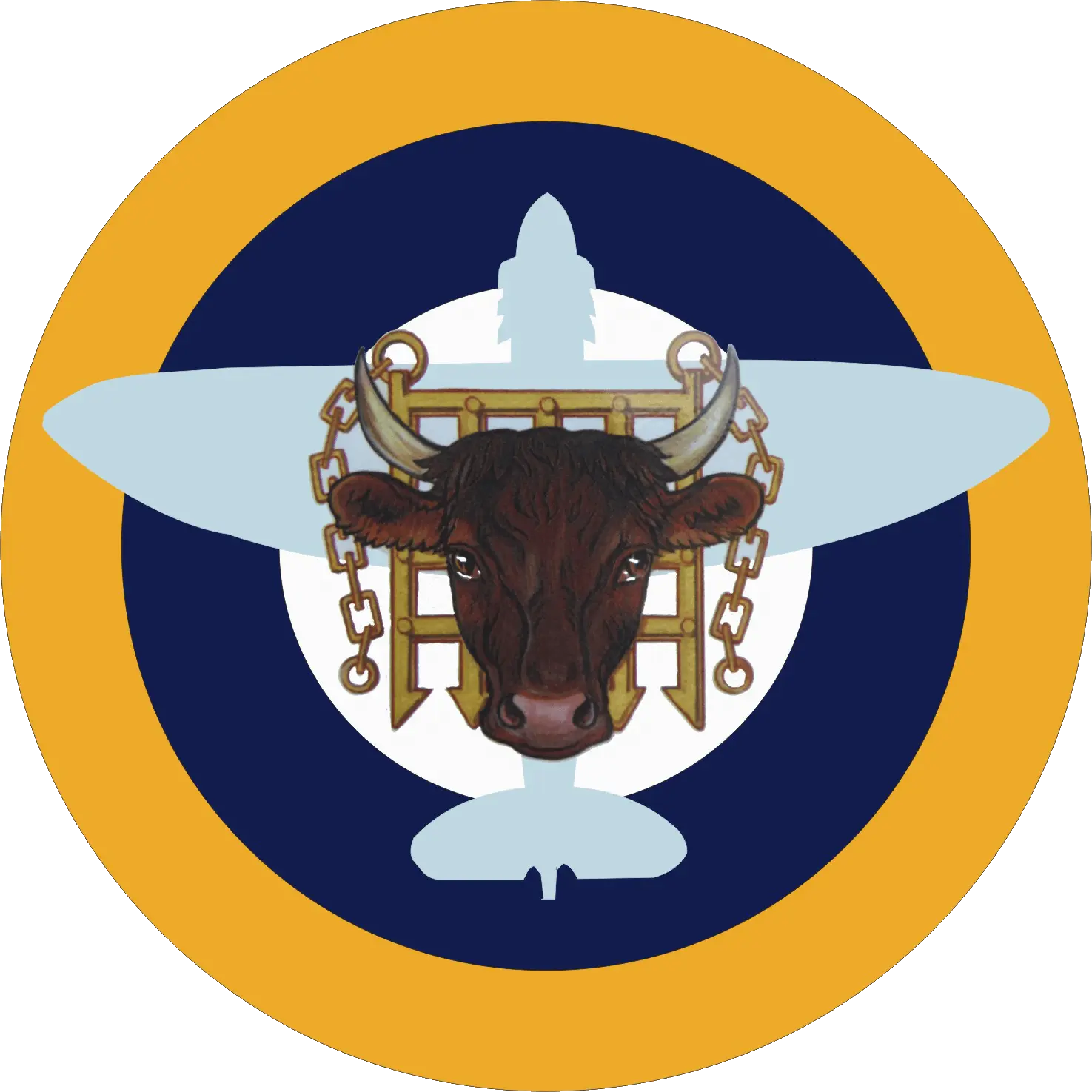Inter-War Years
Inter-War Years 1920-1938
Soon after the First World War ended, it was decided that Suttons Farm was now surplus to requirements and the airfield was decommissioned, although it was retained on a (“List C”) which meant that many former Royal Flying Corps stations would be temporarily retained for service purposes until the 27th February 1920. The land was then returned for agricultural use, with some of the airfield buildings being demolished although some others were left for farming uses. At this stage Mr. Tom Crawford returned to the land to resume farming once more.
Following the decision in the early 1920s to expand the Royal Air Force, former First World War airfields were again inspected to ascertain their suitability for future use. Although small, the Suttons Farm site was ideally located to be able to defend the north-eastern approaches to London and the Essex and Kent coastal stretches. After negotiations, the original land was re-purchased, together with some further land to the south of the original airfield.
The new airfield took four years to construct and finally opened, as RAF Sutton’s Farm, on the 1st April 1928. Two months later the name was changed to RAF Hornchurch and the first unit to take up residency was 111 Squadron with their Armstrong Whitworth Siskin aircraft, the squadron was led by Squadron Leader Keith Park, who would also become the first station commander.
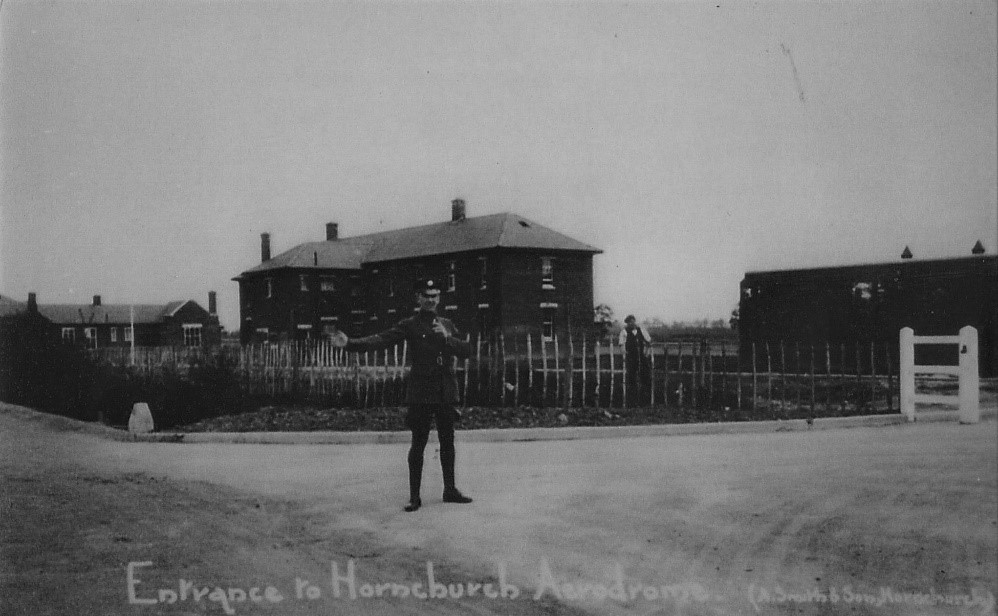
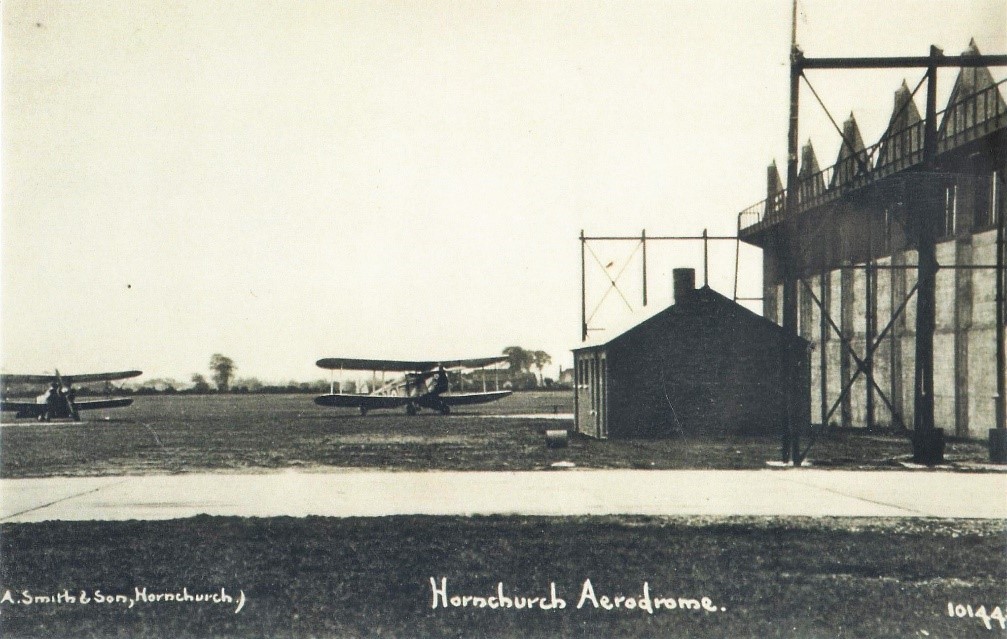
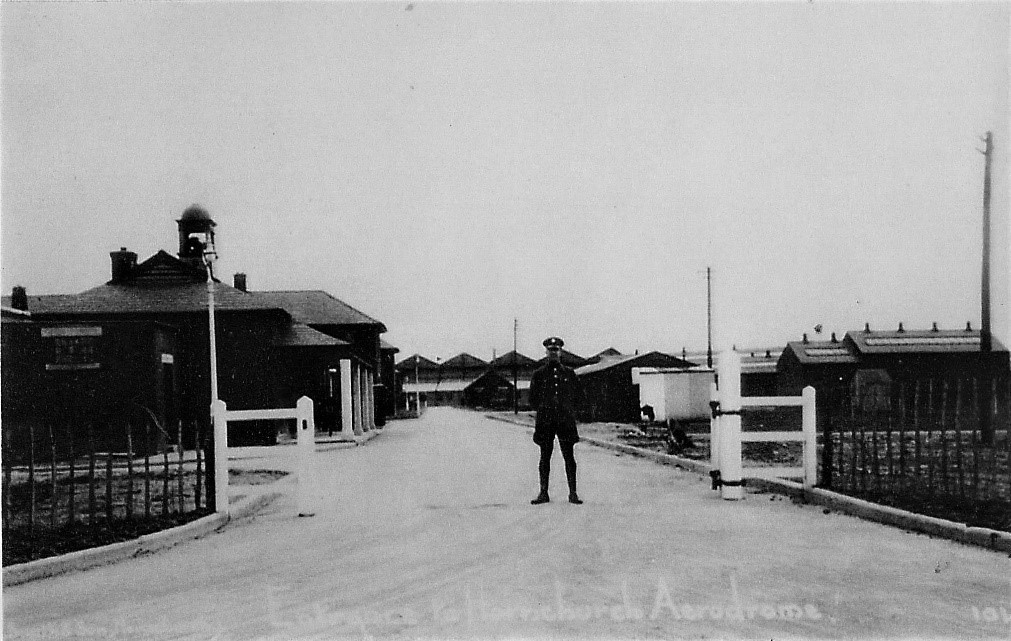
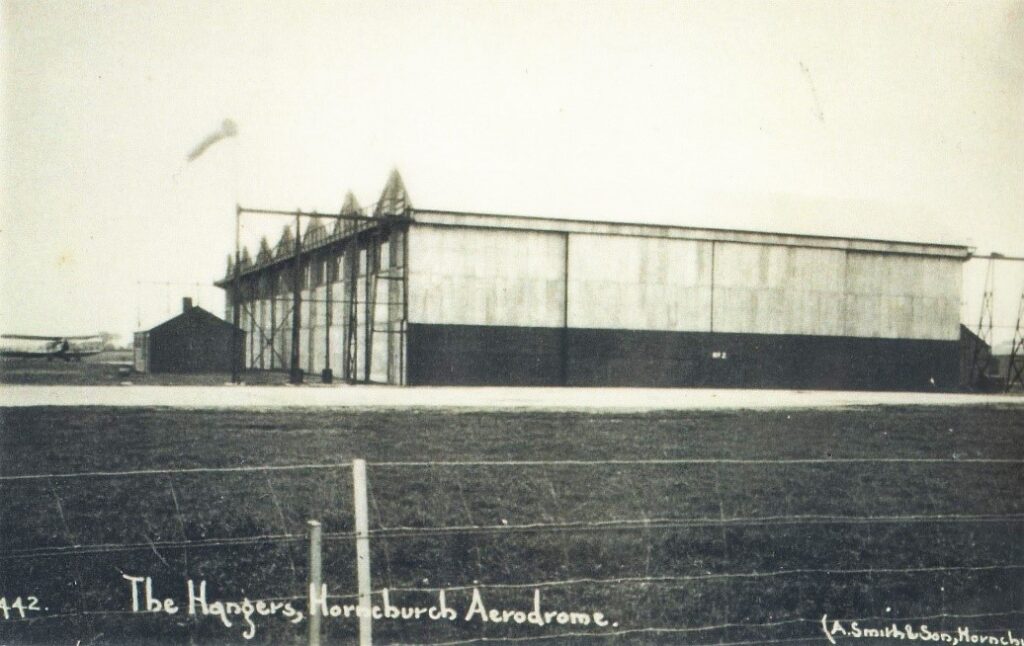
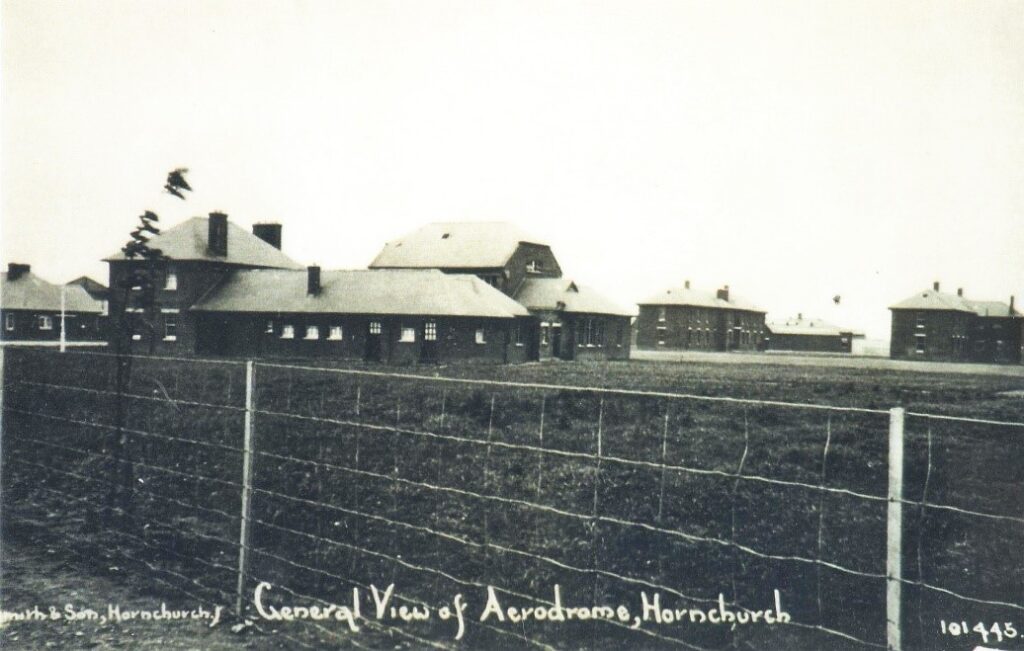
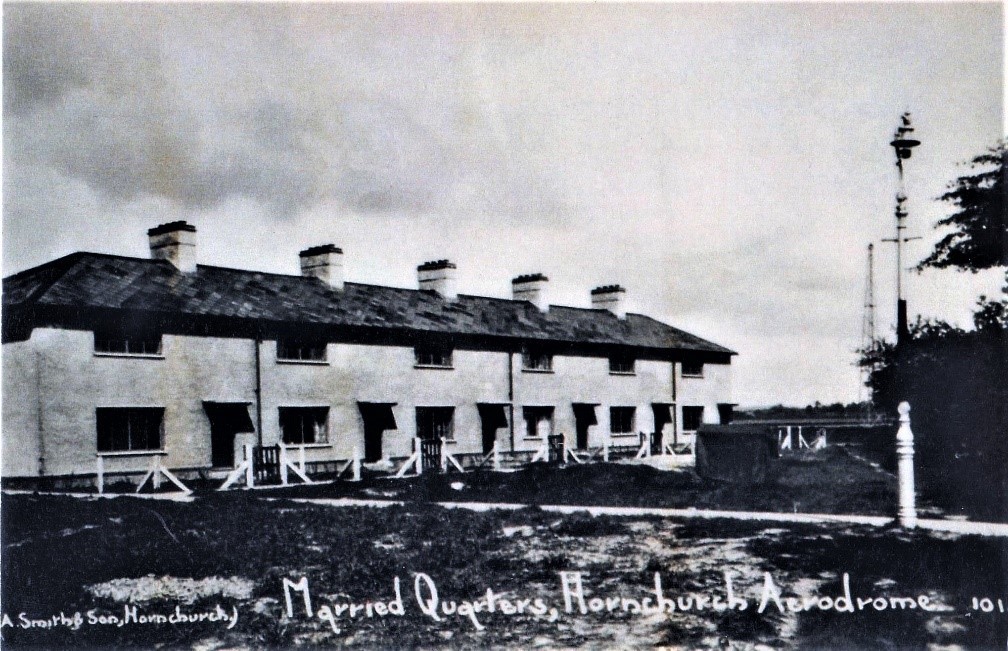
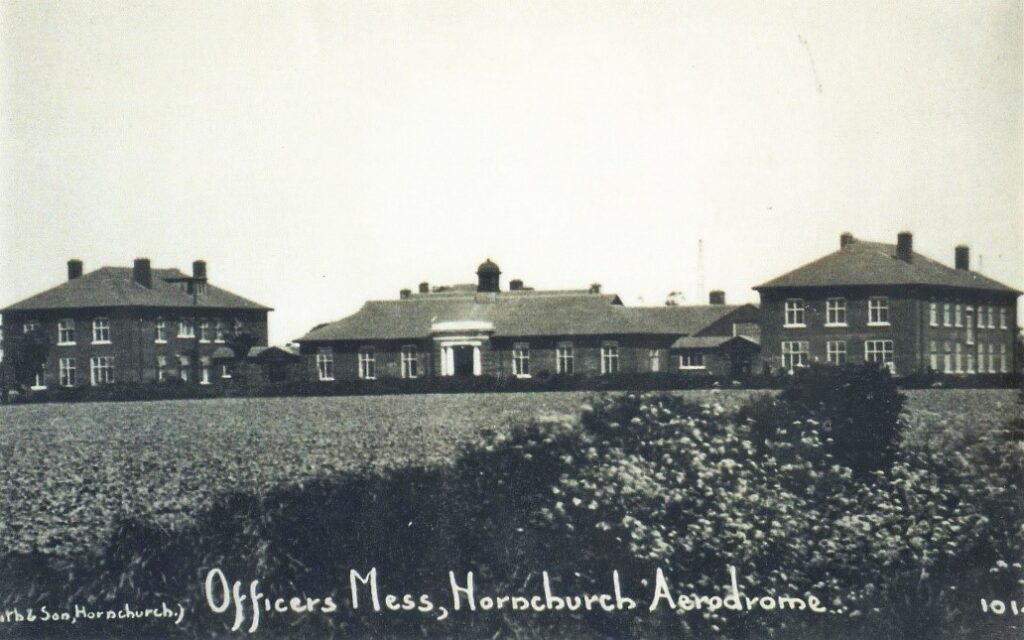
While the newly built aerodrome was still in the midst of settling down into a routine, it received the first of many distinguished visitors from overseas. On the 28th June 1928, General Italo Balbo the Under-Secretary for Air led a formation of eleven aircraft nonstop from Rome to Hornchurch. The flight of Italian aircraft had been met over the Essex coast by five Armstrong Whitworth Siskin fighters of 111 squadron and were escorted back to the aerodrome. The Italian contingent were then traveling on for the RAF pageant at Hendon on the 30th June to represent Italy.
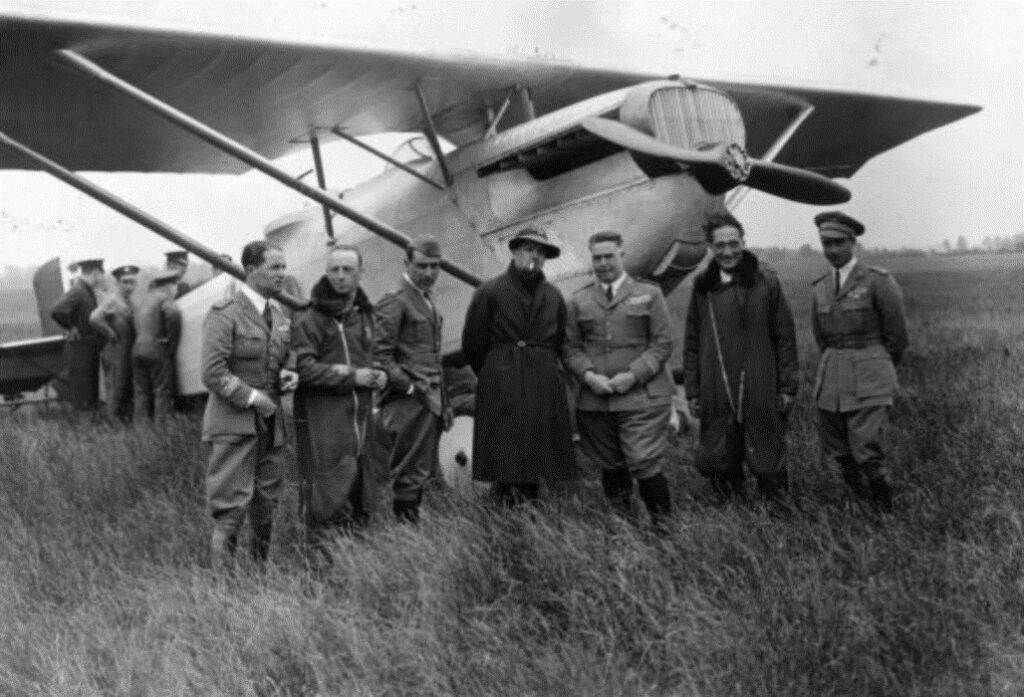
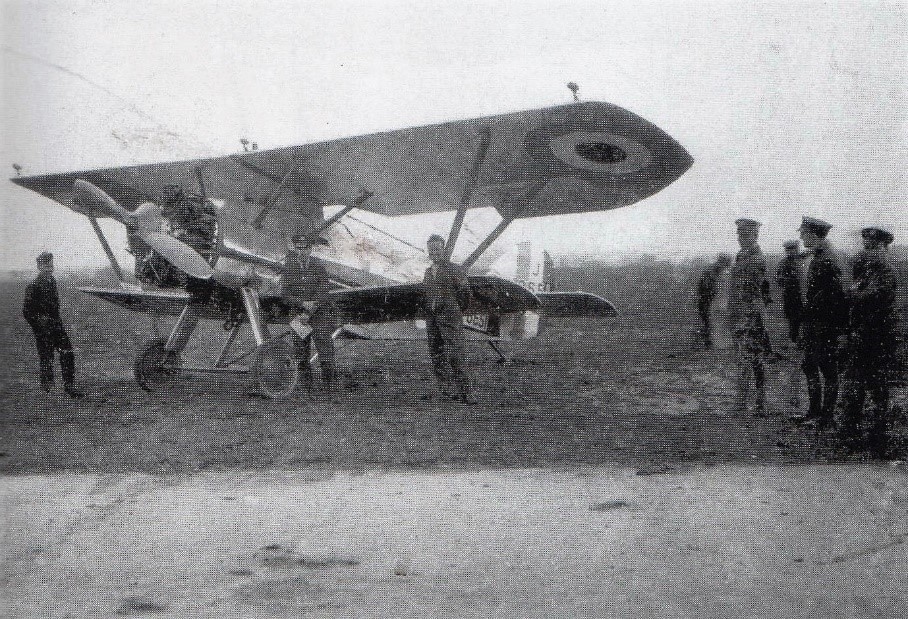
Apart from Keith Park who would later come to prominence during the Battle of Britain, 111 squadron also had another man in its ranks that would later grace the pages of aviation history. Flying officer Frank Whittle who would later in his RAF career become a pioneer in the field of British jet aviation.
During 1929, 111 squadron continuously practiced formation flying and spent most of their time in preparing the routine they were formulating for the annual Air Pageants at Hendon.
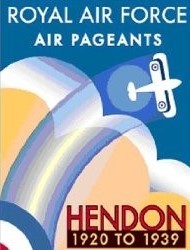
The squadron also worked in co-operation with the army on manoeuvres and in collaboration with their anti-aircraft guns.
The command of the squadron changed twice during the year, firstly with Squadron Leader Soden who took over in March, followed by Squadron Leader Slatter in October of 1929.
Two other squadron detachments arrived at the aerodrome, they were 19 and 23 squadrons who arrived from Duxford and Kenley respectively. By January of 1930, 19 and 23 squadrons had departed but 54 squadron arrived in their Armstrong Whitworth Siskins, although only 4 days later they changed over to the new Bristol Bulldog biplane.
By early 1930, RAF Hornchurch aerodrome already had a personnel strength that was equivalent to its first world war maximum, it had 30 officers, 250 other ranks and 24 civilians on the aerodrome.
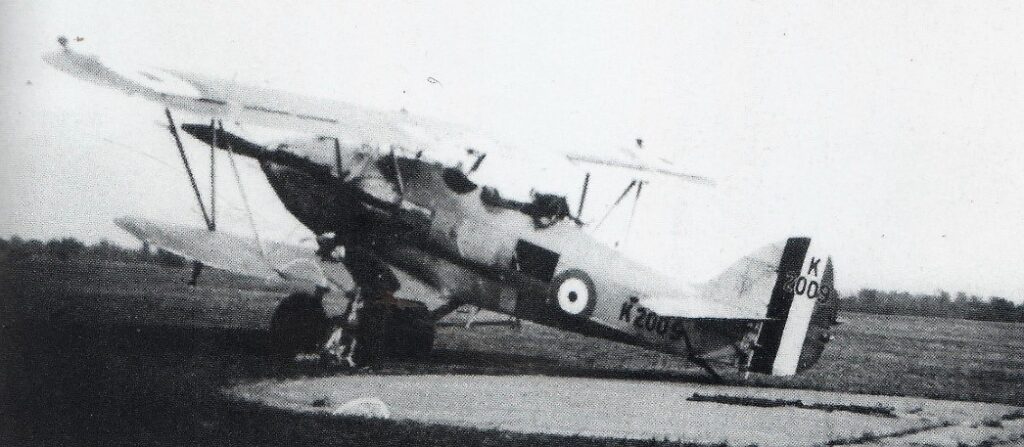
The 1930’s was also the time RAF Hornchurch found its self at the forefront of technical development and operational improvement in fighter aircraft and combat. The previous decade had seen aircraft flying at a pedestrian pace although by the beginning of the thirties great leaps and bounds were coming to the forefront with aircraft generating 450 horse power and reaching speeds of around 156 miles per hour, but by the decades end new aircraft were producing 1,030 horse power and reaching speeds of 355 mph.
Armament practices had been established with the Hornchurch squadrons being sent to the isolated fen countryside armaments camp at Sutton Bridge in Lincolnshire, this site was used by the RAF between 1926 – 1939. Another feature was the Air Defence Exercise which became an annual event. This exercise consisted of a fictitious European mainland country attempting to attack the aerodrome, London and other strategic targets around the south of England. While the squadrons had to try and intercept the enemy as near the coast as possible and keep them from their intended targets. These exercises would prove so valuable because the evolving defensive tactics and experimenting with equipment like a new type of reflective gunsight that would become so important during later conflicts.
During the 1930’s, RAF Hornchurch staged many Empire Air Days, they were an annual public air show which were held at Royal Air Force stations throughout the Britain. These events included aerial displays and fly pasts from many different aircraft, along with exhibitions of static aircraft and displays of air force equipment on the ground.
Hornchurch aerodrome managed to break attendance records for every Empire Air Day it put on, this was solely from the people that paid to go through the gates. But due to its location along the South End Road thousands more would regularly line the roadside and watched for free, while scores of youngsters would climb over the wire perimeter fence to get a closer view.

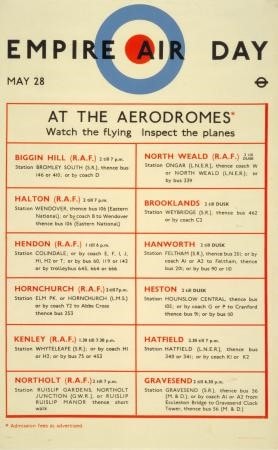
RAF Personnel stationed at Hornchurch during the 1930’s enjoyed the benefits of a very comfortable camp, but outside they were also spoilt with the traditional British institutions, the local public house. The Good Intent was literally 100 yards from the main gate or a leap over the fence from the aerodrome, the White Hart and the Kings Head pubs were in the village of Hornchurch, as was the Towers Cinema which was often frequented by the airmen. Other forays to Barking, central London and Southend were all made by train from Hornchurch and Upminster.
With the arrival of 54 squadron at the beginning of 1930, Hornchurch had now become a two-squadron station. A station Headquarters was set up to accommodate the first non-squadron commanding officer to take control of the aerodrome, Wing Commander Edye Rolleston Manning, who arrived on the 4th April 1930, he would stay until 1933.
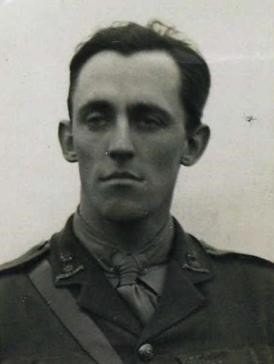
54 squadron would stay at Hornchurch for the next 12 years if you include its brief detachments to the satellite field at Rochford and to Catterick for rest periods during the Battle of Britain. It was the longest serving squadron at RAF Hornchurch and came to be regarded as ‘Hornchurch’s Own’.
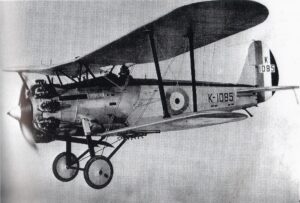
Flying accidents were something that was always very present in the mind and at the aerodrome during the 1930’s many would occur. One such incident involved Lieutenant Kobayashi of the Imperial Japanese Naval Air service, he had been attending a six-week training course at RAF Hornchurch. On this particular occasion, the Siskin Kobayashi was flying suddenly burst into flames in mid-flight, he successfully baled out of his blazing aircraft but was badly injured and had to be taken to the Victoria Cottage Hospital in Romford. His Siskin crashed near to the aerodrome and burnt out on impact.
By July of 1934, 111 squadron was moving to pastures new at RAF Northolt and were replaced by the newly reformed 65 squadron who flew in with their Hawker Demon aircraft and later would convert to the Gloster Gauntlet.
In 1935 the aerodrome played host to two visiting VIP’s, they were Air Officer Commander in Chief, Sir Robert Brooke-Popham and Sir Philip Sassoon MP for Hythe and Parliamentary Private Secretary to David Lloyd George.
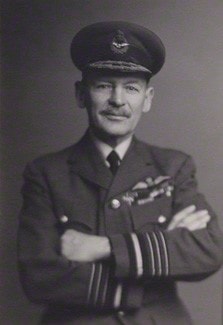
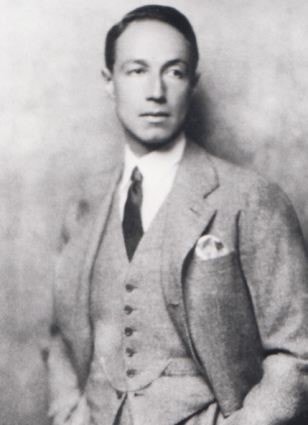
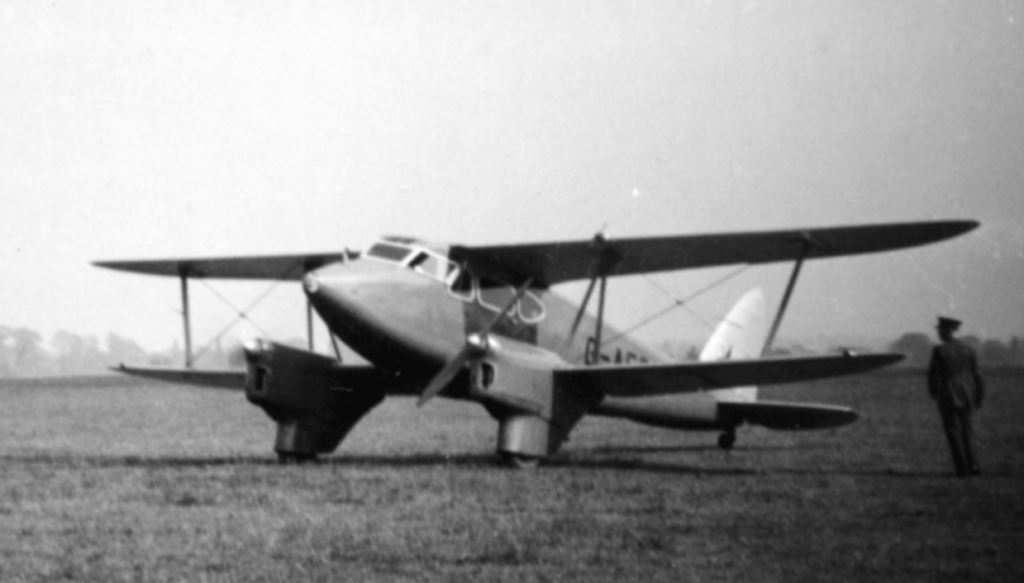
King George V passed away on the 20th January 1936 and on the 2nd February a party of men lead by the Station Commander Arthur Stanley Gould Lee, they attended a Memorial Service held for the late King at St Andrews Church in the village of Hornchurch.
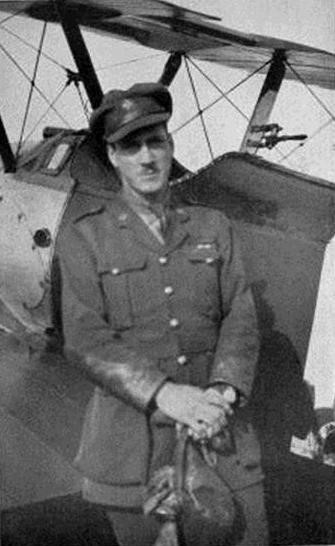
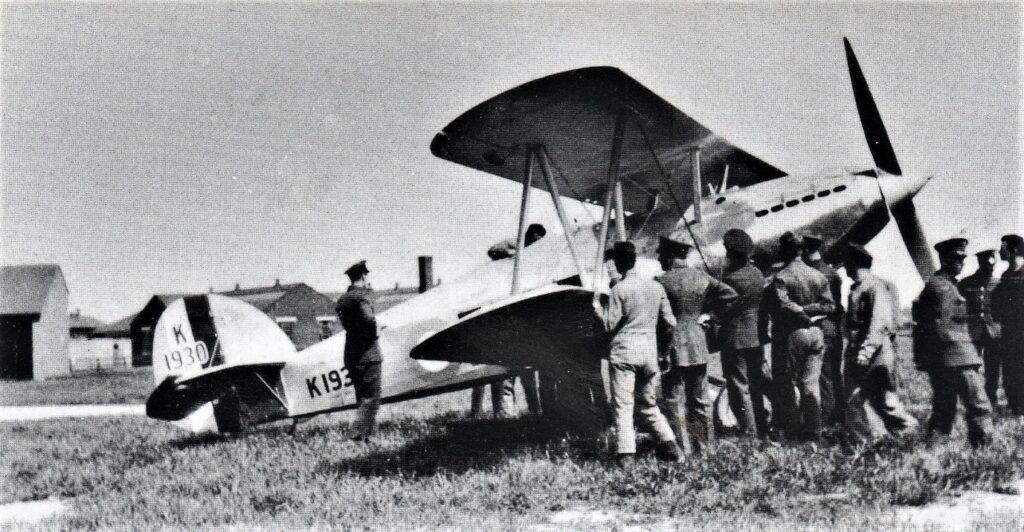
54 squadron had a new Pilot Officer Donald Finlay arrive for duty with them in February of 1936, Finlay had also been appointed captain of the British team that were going to compete in the 1936 Berlin Olympic games. His event was the 110 metre hurdles race, in which he finished second winning the silver medal behind the American Forest Towers.
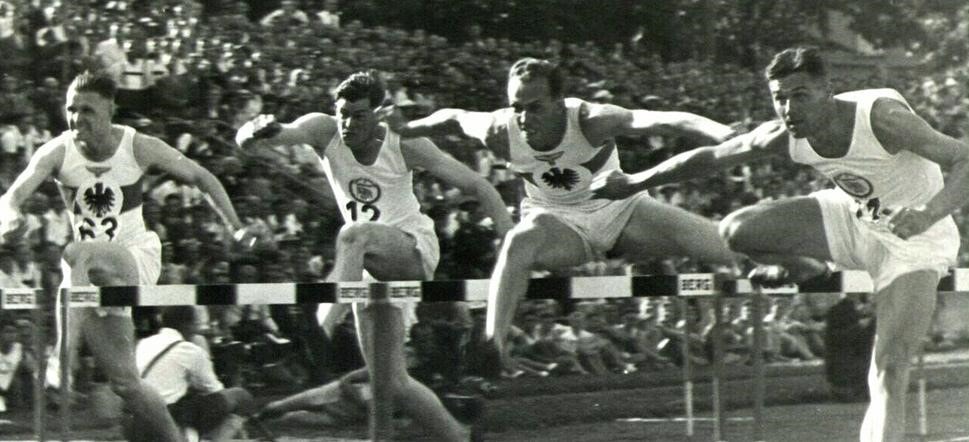
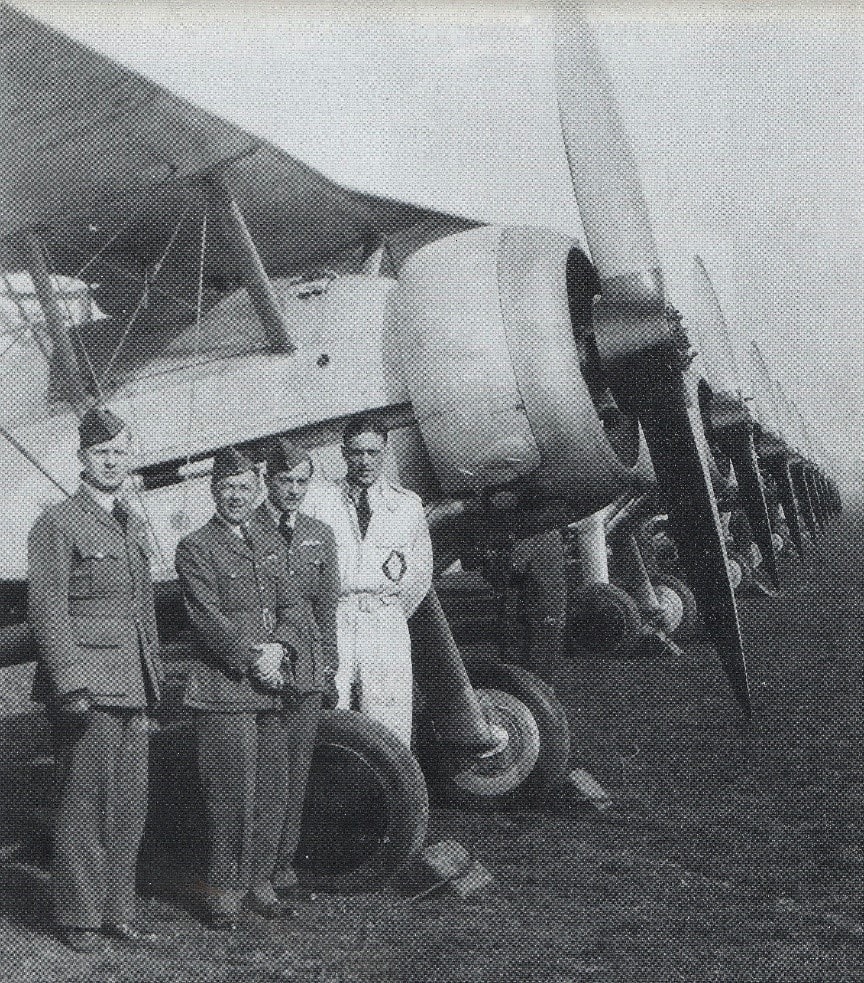
Additional new buildings were added to the aerodromes landscape, including a third hanger along with an improved watch office.
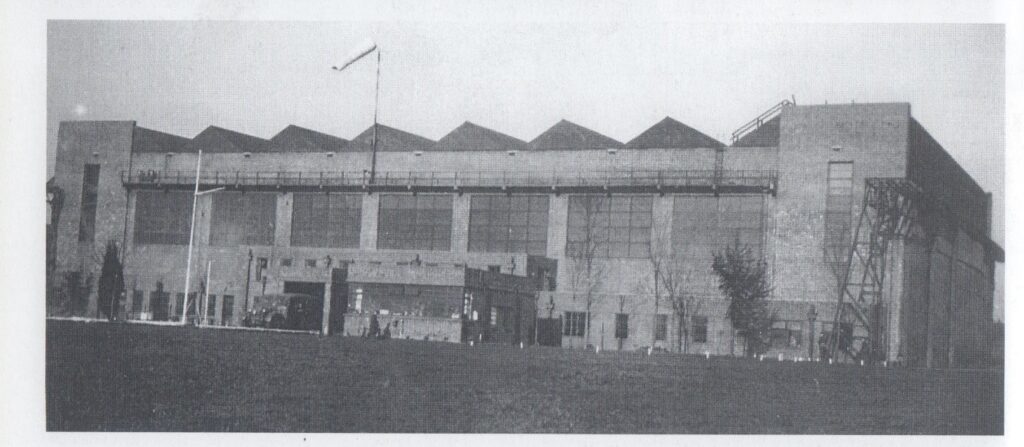
While just 800 yards up the road at St. Georges Hospital a new 150-foot chimney was built, this would lead to all night flying being banned for 6 months until the chimney was adequately lit up enabling it to be seen by the pilots.
By September of 1936, a third squadron arrived to take up residence at the aerodrome, 74 squadron had returned to Britain from the recent Abyssinian crisis, they were commanded by Squadron Leader Donald Brookes. A new Pilot Officer also joined the squadron, his name was Adolf Gysbert ‘Sailor’ Malan, later to become the squadrons wartime commanding officer. It was whilst at Hornchurch that 74 Squadron`s tiger head badge and famous `I Fear No Man` motto was authorised.
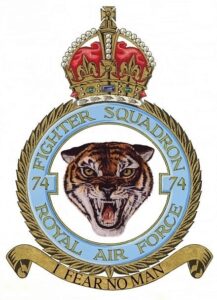
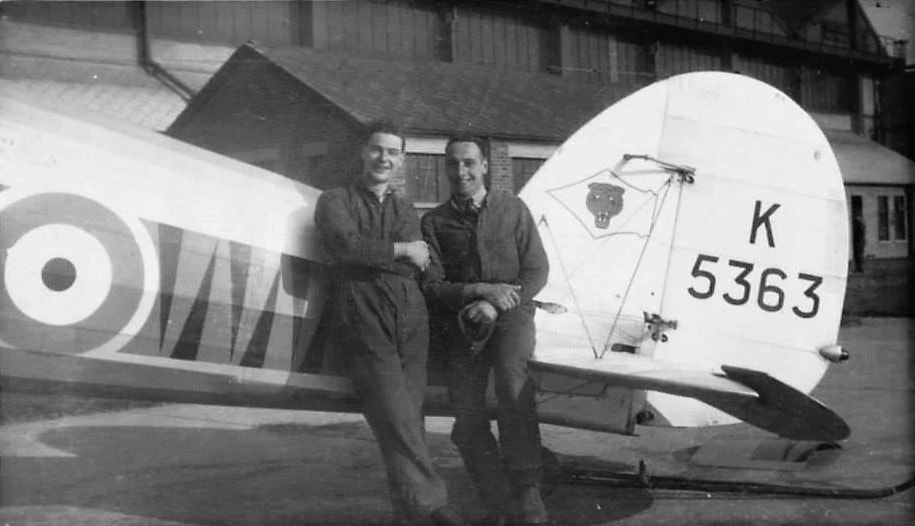
At the end of September Sir Hugh Dowding, Commander in Chief of Fighter Command visited the aerodrome to inaugurate the new D’ Sector Operations Room, which raised the status and profile of Hornchurch to one of only seven Sector stations within No.11 Group of Fighter Command.
During April of 1937, both 54 and 65 squadrons converted from the Gloster Gauntlets to the Gloster Gladiator, while 74 squadron changed from the Hawker Demon to the Gloster Gauntlet.
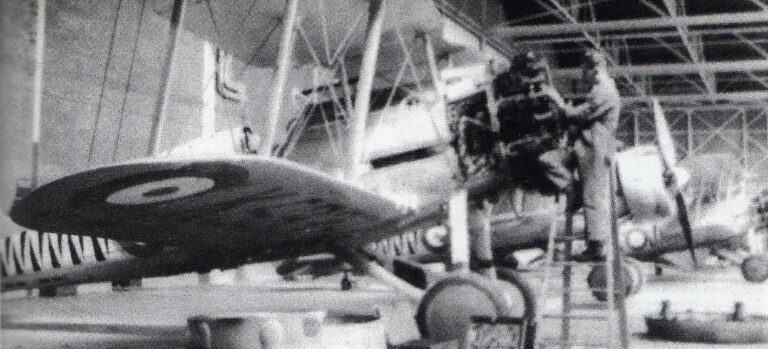
On the 12th May 1937 the Coronation of King George VI took place at Westminster Abbey, with part the route being lined with NCO’s and Airmen from RAF Hornchurch. A little nearer to home, aircraft from Hornchurch aerodrome carried out a mock night attack in conjunction with the searchlight battery on the Romford stadium as part of Romford’s Coronation Day Celebrations.
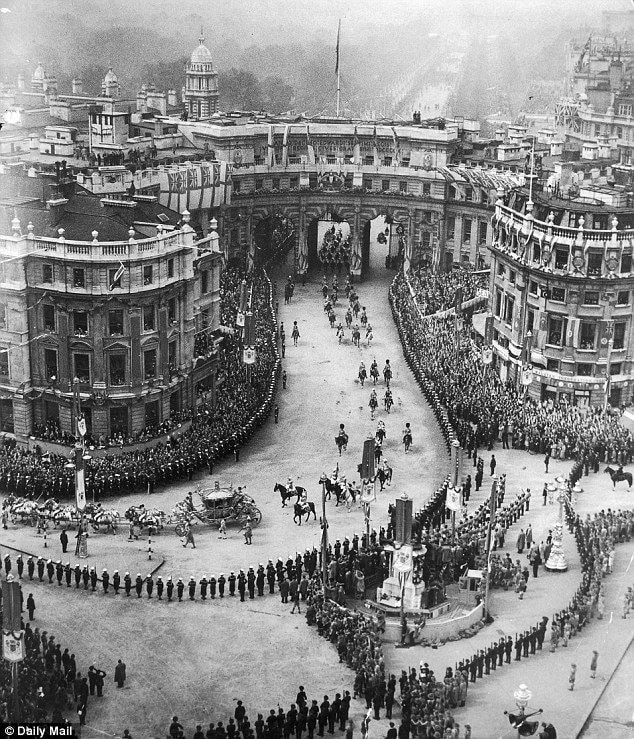
A fatal accident occurred on the 25th May 1937 involving a Gloster Gauntlet K7828 of 65 squadron. The sergeant pilot was Frederick William Boxall, who was only 21 years old. He was killed while his aircraft was performing aerobatics at around 2,000 feet when part of the top starboard wing broke away sending the aircraft into an uncontrollable spin. The stricken aircraft crashed at Maylands, a civil aerodrome near Harold Wood, Romford.
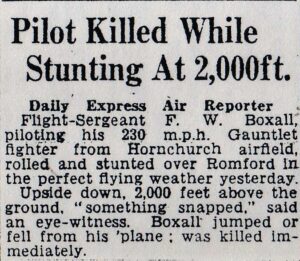
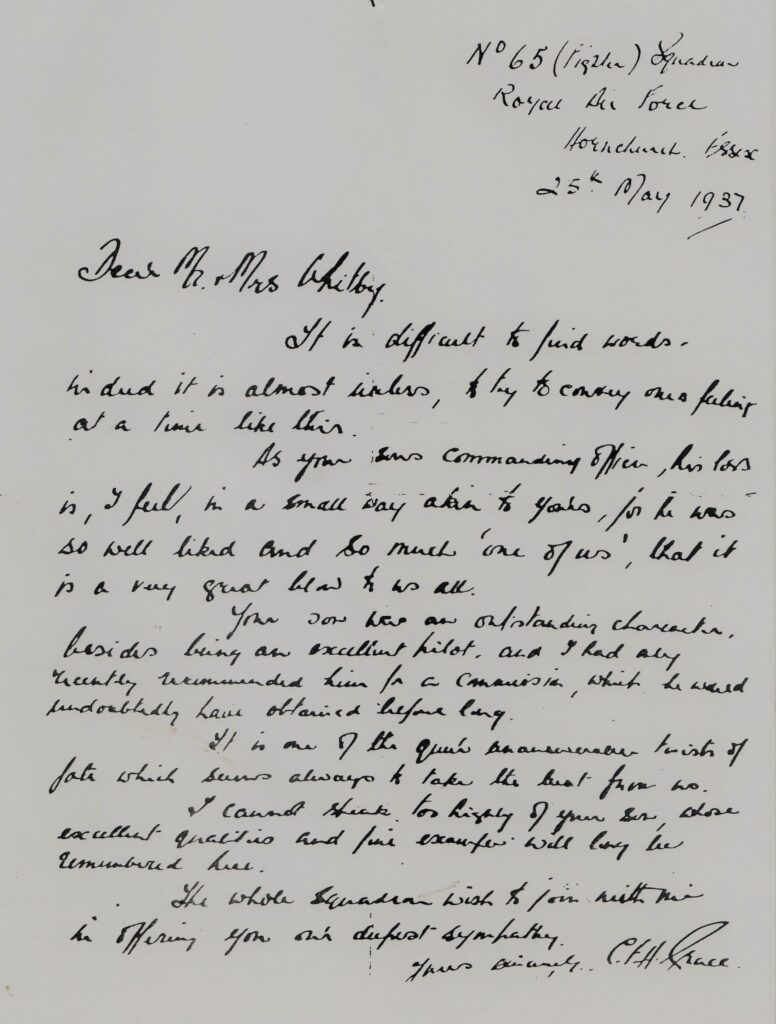
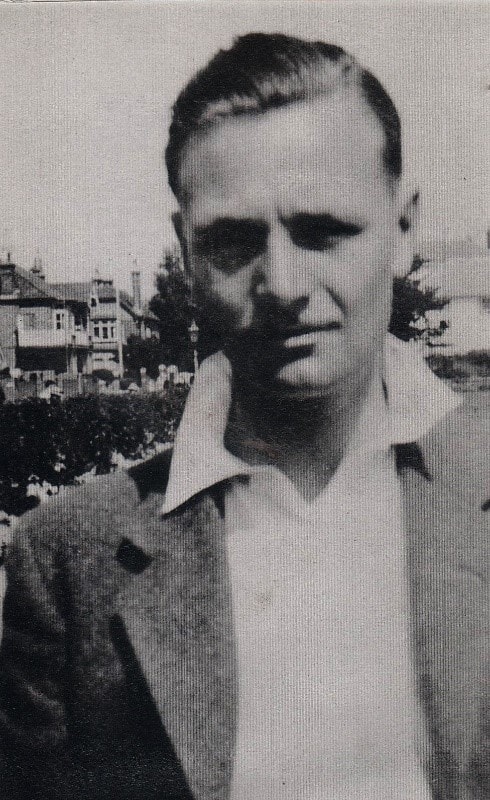
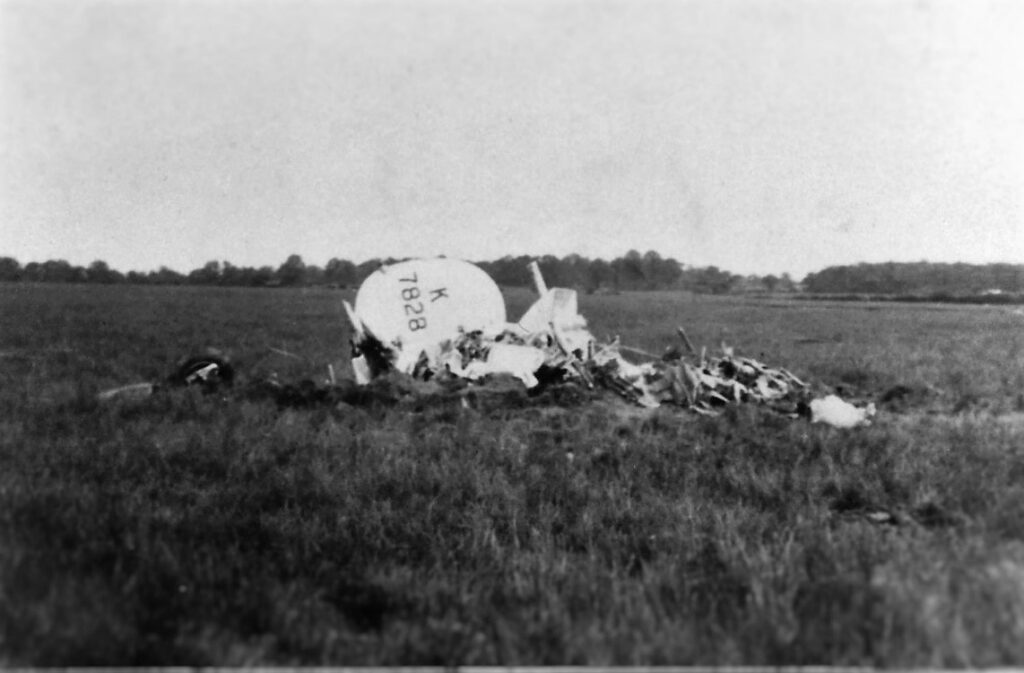
Another tragic loss occurred on the 16th June 1938, when sergeant Marsh of 54 squadron was tragically killed in a flying accident over the Ilse of Sheppey in Kent. Below is a newspaper report from the Chelmsford Chronicle of the time.
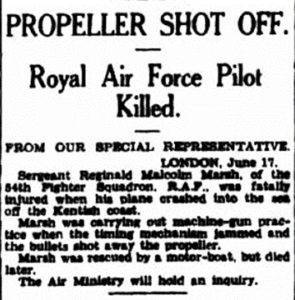
Chelmsford Chronicle – Friday 24th June 1938
R.A.F. PILOTS TRAGIC DEATH.
Sergeant Reginald Malcolm Marsh, of the 54th Fighter Squadron, R.A.F., Hornchurch Aerodrome, was killed when the aeroplane he was piloting crashed over Leysdown, Isle of Sheppey. He was engaged in machine gun practice, when the timing apparatus went wrong, and the bullets shot away the blades of the propeller of his machine. Realising his predicament, the pilot jumped from the machine as it was crashing, but his parachute failed to open, and he fell and received injuries from which he died in Eastchurch Hospital. He had that day gained his pilot’s wings.
A fatal accident occurred to the relative of a Sheppey farmer. Sergeant Pilot R.M. Marsh, the 23-year-old nephew of Mr. R. Marsh of Rayhams Farm, Eastchurch, died in a crash at Leysdown. 54 Squadron had come across from Hornchurch on the morning of the 16th June 1938 for gunnery practise in their Gloster Gladiators at the Leysdown ranges. At around midday, as Marsh was approaching the floating targets and had begun firing, his aircraft was seen to dive into the sea, throwing him out.
By the time his rescuers had swum and rowed out to him he had died and the aircraft was sinking below the waves. At low tide, the airframe and engine were recovered but with two propeller blades missing. The Inquiry was told that Marsh had probably shot the blades off himself due to faulty synchronisation and that had caused the crash. His body was eventually buried with full military honours at Leysdown St clement churchyard.
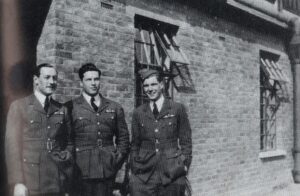
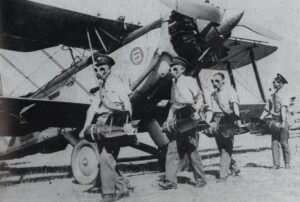
The aerodrome received many distinguished visitors during 1937, they included the Maharaja of Nepal who was accompanied by the Nepalese Prime Minister, The Viscount Swinton. While in October a high-ranking delegation arrived from Germany, they were to tour various RAF aerodromes on their visit, including Hornchurch. The Luftwaffe Officers Erhard Milch, Hans Jurgen Stumpff and Ernst Ude, were all accompanied by the German Air Attaché Major Polte.
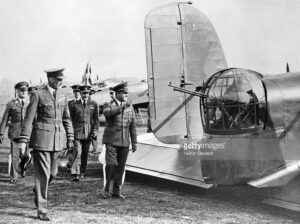
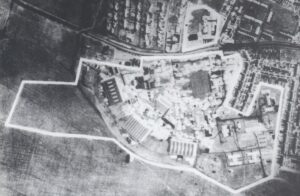
By 1938 more visits were planned for the RAF’s shop window, which was RAF Hornchurch. Distinguished visitors included the Sultan of Muscat and Oman, Sir Kingsley Wood, Secretary of State for Air. The Right honourable Leslie Hore-Belisha, British Secretary of State for War and one of the most famous female aviators of the day, miss Jean Batten, who attended the Empire Air Day in her Percival Gull Monoplane.
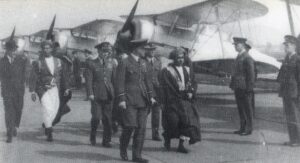
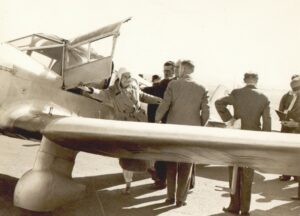
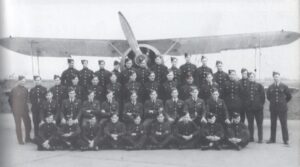
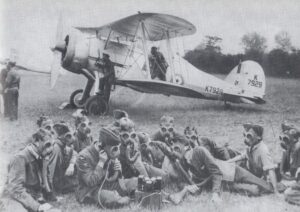
By September of 1938, RAF Hornchurch was brought to a state of immediate readiness for war, all personnel were recalled from leave and the operations room was manned 24 hours a day. These measures were escalated because of the seriousness of Adolf Hitler’s claims being made over the region of Czechoslovakia called Sudetenland.
During this time, the squadrons were ordered to camouflage their aircraft and with all the available paint being brought out from the quartermaster’s stores. The beautiful silver biplanes were then unceremoniously covered in green and brown paint.
As a prelude to the possible future hostilities which would now include RAF Hornchurch, they could only sit and wait for the outcome of what looked increasingly likely as being another world war.
When 1939 finally arrived, the first outstanding event to take place at the aerodrome was the re-equipment of all three home squadrons with the new Supermarine Spitfire, the first instalment happened on the 13th February when 74 squadron received their Spitfires. Over the next eight weeks 54 and 65 squadrons were to make the changeover from their Gloster Gladiators to the new monoplane fighter.
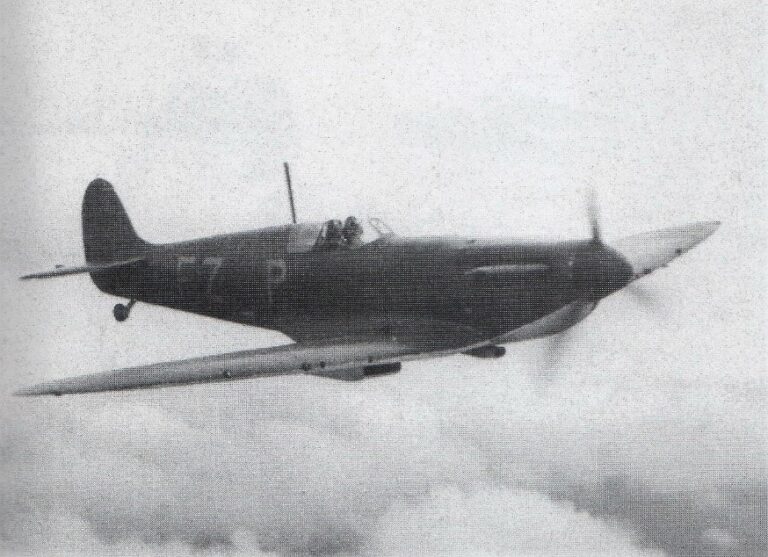
With the arrival of the new Spitfire fighter, attendances were boosted for the last Empire Air Day in May 39, when numbers reached 45,000 paying spectators and an educated guess of another 20,000 viewing from around various points close to the aerodrome.
In that years Air Defence Exercise, 25 squadron flying their Bristol Blenheim’s moved into the aerodrome from Hawkinge. Another new feature at the last peacetime exercise was the new broadcasting system which was installed to enable the controller’s instructions to go out across all of the aerodrome, reaching out to all the dispersals, crew rooms and the hangers. The ’Tannoy’ system as it would become known, was in fact the name of the manufacturing company that produced it. Once the system had initially tried and tested at RAF Hornchurch it became a standard practice to use it at all RAF stations.
